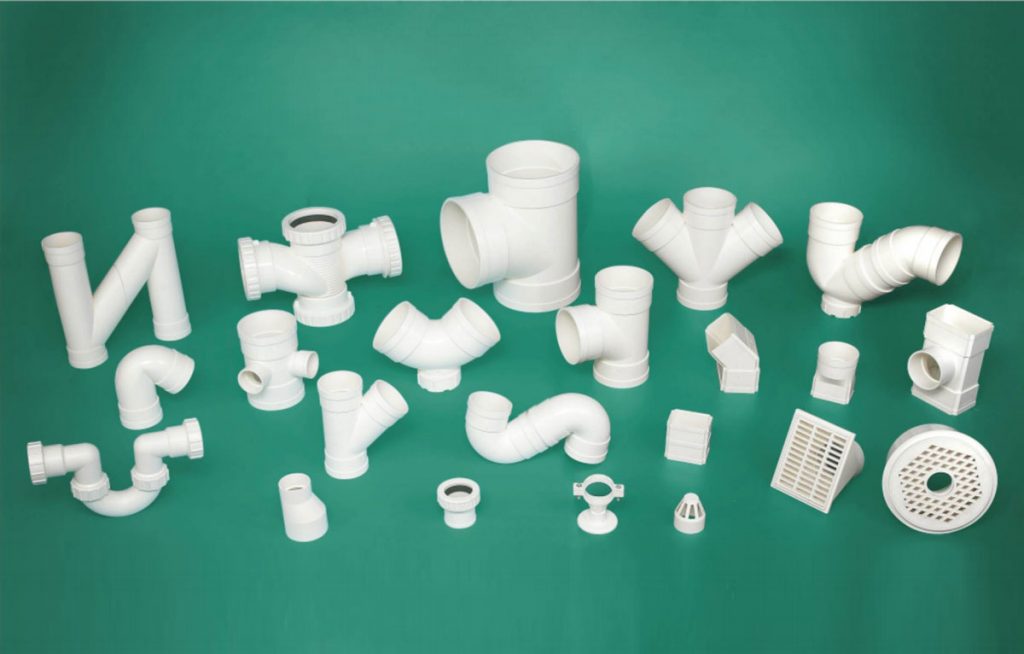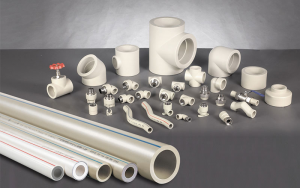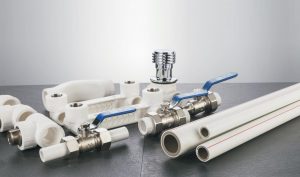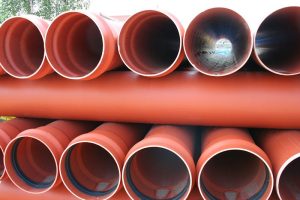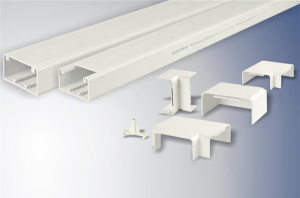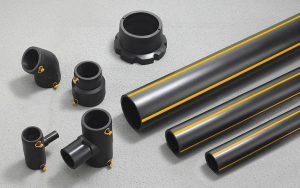Do you need to update the drain pipes in your home? Your house drainage system is responsible for removing the wastewater from your home and funneling it into the city’s water treatment system. Let’s take a look at the importance of drain pipes and how to choose the right type.
Importance of choosing the right drainage pipe
When you need a new house drainage system, there are many factors to consider, including the material and the diameter of the pipe. Choosing the right pipe material helps ensure that you get the right amount of expected useful life and don’t have to replace the pipes prematurely.
Choosing the right pipe material also helps minimize the repairs and maintenance costs that you may incur throughout the life of the pipe. Choosing the right diameter helps ensure that the water is transported away from your home without causing slow drainage during periods of high use, and it helps prevent clogs and sewage backups.
Understanding your home's drainage system
Your home’s total drainage system has two separate systems. The first system is for dissipating rainwater or surface water from your home. The second system is for wastewater, which is sometimes referred to as foul drainage. Understanding the systems can help you choose the right drainage pipe types.
Residential Stormwater Systems
When it rains, the stormwater system on and around your home funnels that rainwater away from your exterior walls and foundation to the city’s stormwater system. It helps prevent puddles and flooding on your property.
Your home’s stormwater system consists of your gutters and downspouts and sometimes catch basins, which are storm drains that are covered with grates, drop inlets, or flanking inlets.
The catch basins are connected to pipes that lead to the city’s stormwater management system. You may see catch basin inlets around your foundation, in front of your garage door, or around a patio.
Residential Wastewater Systems
Your residential wastewater system is the drainage system that funnels dirty water from your showers, bathtubs, sinks, toilets, and other water-using appliances. This water is considered either gray or black, depending on the fixture where it originated.
In general, greywater is water that’s contaminated with dirt and soap but not pathogens or human waste. Blackwater is water that contains human waste and pathogens. It’s important to note that both greywater and backwater are funneled into your sewer pipe and onto the city’s water treatment plant for filtering and decontamination.


Types of drainage pipes
- PVC – It’s extremely durable and can withstand heavy weights, pressure, and some chemical exposure.
- HDPE – can be used in all types of drainage applications, including residential, commercial, and floor drains. It can withstand high temperatures and chemical exposure and has an expected useful life of about 50 years.
- Cast Iron – Cast iron pipes are typically used for sewer lines. They have an expected useful life of about 50 years.
- Clay – Clay pipes are most often used for sewer lines. They have an expected useful life of between 50 and 60 years.
- Concrete – Concrete piping is typically used for sewer pipes, irrigation channels and large municipal storm sewers, and wastewater/sanitary sewers. It has an expected useful life of between 75 and 100 years.
- Copper – Copper pipes are well-known for their use as potable water lines. However, they can also be used for drain lines and as gutters. They have an expected useful life of between 70 and 80 years.
- Perforated – Perforated pipes are used outdoors in French drain systems. They are used to funnel groundwater and stormwater away from the home and property. Homeowners can expect them to last between 10 to 30 years.
- Polyethylene – Extremely flexible and eco-friendly. Known for its ability to fit in tight spaces and around corners. These pipes usually last between 50 and 100 years.
Factors to consider when choosing a drainage pipe
The three most important factors to consider when choosing the right drain pipe include the strength, size, and how complicated it is to install. Most homeowners should choose a drain pipe that is durable and chemical resistant with a long lifespan in order to minimize maintenance and repair costs throughout your drain pipe’s expected useful life.
- Material – The material of the drainpipe affects its properties, including chemical resistance, durability, and longevity.
- Pipe Diameter – The pipe diameter affects the flow rate of the water from the drain through your home’s drainage system to the sewer pipe. This is particularly important when choosing the right toilet, shower, and sink drain pipe size. The good news is that if you hire a contractor, he or she can determine the anticipated flow rates in order to choose the right size drain pipe.
- Soil Conditions – If the drain pipe or sewer line is to be installed in the ground, the soil conditions must be examined. Exceptionally rocky soil may require the installation of a pipe that is both durable and flexible, like HDPE.
- Installation – Some pipes are easier to install than others. If the pipe needs special fittings or installation techniques, the installation costs may be higher than anticipated.
- Maintenance – Make sure to look at the maintenance requirements for the types of pipes you are considering. Some lines may require frequent inspections and cleaning in order to keep the water flowing.
- Regulations and Building Codes – Make sure to check your local regulations and building codes regarding drain pipes. Some cities and states may have specific requirements for types and sizes of drain and sewer lines.
- Warranty – make sure your new drain pipes come with a warranty and read the warranty specifications to make sure you are compliant with the warranty so that you don’t accidentally void it.
Installation and maintenance tips
When installing drain lines, it’s best to have previous plumbing experience or hire an experienced plumber so that you get the right type of pipes for your needs, and that they are installed correctly. Once your pipes are installed, it’s important to follow proper drain use and maintenance guidelines.
- Have regular inspections performed on your drain lines and sewer pipe.
- Investigate slow drains and have any clogs cleared as soon as possible.
- Remember to clean your gutters and flush catch basins and French drains.
- Pay attention to any trees or bushes that may be growing near your drain lines. Plants can break and infiltrate drain lines and sewer pipes that are located in the ground.
- If you suspect you have a drain pipe leak, get it repaired promptly.
- Practice proper drain stewardship by only flushing toilet paper and human waste down your toilets and never putting grease, oil, or lard down your sink drain.
Common drainage problems and solutions
Even the best-maintained drain systems can still experience problems. Thankfully, the solutions are usually simple.
- Clogged drains – Use strainers to catch hair and food particles. Only flush toilet paper and human waste. Never put grease, meat, or vegetable scraps down your sink drains. Standing water around your home or yard – Can be caused by blocked catch basins or not having enough catch basins. Flush outdoor drain systems regularly, and install additional catch basins, if needed.
- Root infiltration – Most common in sewer lines. Consider removing nearby trees and shrubs that may grow into your sewer pipe.
- Cracks and breaks in your drain pipes or sewer line – have your drain pipes and sewer lines regularly inspected. This can catch small issues before they become expensive repair bills.
- Multiple slow drains – Could be caused by a sewer pipe blockage or drain lines or pipes that aren’t sized correctly. A professional plumber can inspect your drain pipes and sewer lines in order to determine the problem and repair it.
- Flooding in your basement or crawlspace – This could be due to groundwater infiltration or a failed sump pump.
- Terrible odors – If your home or property stinks, it could be due to sewer line problems or standing water in your catch basins. Remember to regularly clean your drain lines and flush your catch basins.
Conclusion
If you need drain pipes, sewage pipes, or roof and gutter pipes to funnel stormwater away from your home, consider the products offered by Lesso. We have PVC-U drainage pipes and fittings, PVC-U gutter pipes, HDPE same-Floor Drain Systems, and siphon-type drain systems that can help you funnel wastewater and stormwater onward to the appropriate municipal systems. Our products are expertly designed and durable so that you can feel confident in your drainage system.
FAQ about Drainage Pipe
PVC pipes are the best option for most drainage projects due to their strength, durability, and corrosion resistance. They are also relatively inexpensive and easy to install.
PVC pipes are strong enough to withstand the weight of soil and water and are not easily damaged by roots or debris. They are also resistant to corrosion from water, chemicals, and other elements, making them ideal for harsh weather conditions or exposure to chemicals.
Additionally, PVC pipes are cost-effective and easy to install, as they can be joined with various fittings and buried in the ground without special preparation.
A sewer pipe is a large pipe that carries wastewater from a building to a treatment plant or septic tank. A drain pipe is a smaller pipe that carries wastewater from sinks, showers, and toilets to a sewer pipe.
The main difference between a sewer pipe and a drain pipe is the size of the pipe. Sewer pipes are typically much larger than drain pipes. Sewer pipes are also made of different materials than drain pipes. Sewer pipes are typically made of concrete or clay, while drain pipes are typically made of PVC or ABS plastic.
Signs of a leaking drain pipe include water stains on walls or ceilings, a musty smell, bubbling paint, sagging floors, uneven tiles, and the presence of rats or mice.
These signs could indicate that water is seeping through walls or ceilings, causing paint to bubble, weakening floors, or making tiles loose and uneven. Rats and mice may also be attracted to the water and living in the walls or ceilings near the leak.


How Does City Drainage Systems Work
Table of Contents Human influence on the hydrologic cycle has been witnessed throughout time and seen in nearly all aspects of our daily lives. Our
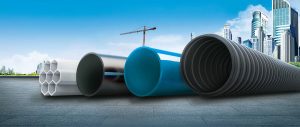

6 Things You Should Know About Drainage & Sewerage Pipes
There are many parts of the construction industry that are difficult to understand, but the differences and uses of drainage and sewer pipe are not too complicated


